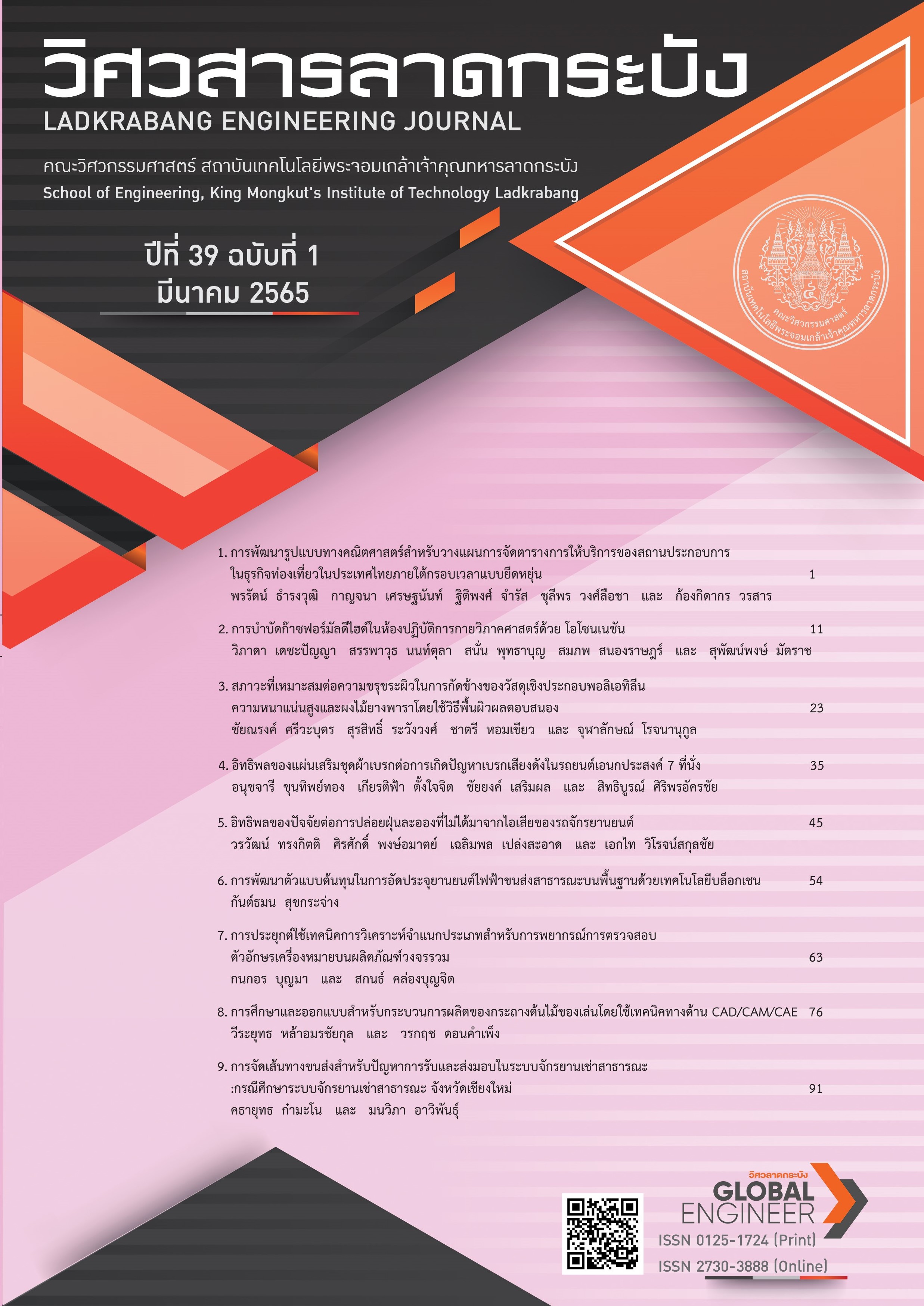Pickup and Delivery Vehicle Routing Problem in Bike Sharing System: A Case Study of the Chiang Mai Bike-Sharing System, Thailand
Keywords:
Vehicle routing problem, bike-sharing system, pick-up and delivery problem, bike rebalancingAbstract
This research will discuss several of the problems facing vehicle routing for delivery and pick- up services related to the bike-sharing system. Specifically, this research will analyse a case study of the Chiang Mai bike-sharing system, in Thailand. This research will propose resolutions by routing the bike reallocation between the distribution hub to the 12 terminal bike stations in order to minimize the total distance of bike reallocation to reach an optimal fleet capacity. Given that transportation costs are significant for the bike-sharing system, it is crucial to consider route reallocation as a means to ensure economic success and viability. The study regarding pick-up and delivery routing problems was conducted by comparing current routing with a mathematical routing model. According to the computational model, the reallocation distance can be decreased by 6.33 km. The benefits of an alteration to the existing fleet with a lower capacity is also argued. These reallocations may reduce the total distance by only 4.83 km per route. The alternative fleet capacity providing the bike-sharing enterprises for making bike- reallocation cost properly.
References
P. Demaio, “Bike-sharing: History, Impacts, Models of Provision, and Future,” Journal of Public Transportation, vol. 12, no. 4, pp. 41–56, 2009, doi: 10.5038/2375-0901.12.4.3.
P. Demaio. “Bike-shairing World Map.” http://bike sharing.blogspot.com/2021/10/the-meddin-bike-sharing-world-map-mid.html (accessed Jul. 29, 2020)
J. C. García-Palomares, J. Gutiérrez and M. Latorre, “Optimizing the location of stations in bike-sharing programs: A GIS approach,” Applied Geography, vol. 35, no. 1–2, pp. 235–246, 2012, doi: 10.1016/j.apgeog.2012.07.002.
P. Midgley, “The role of smart bike-sharing systems in urban mobility,” Journeys, vol 2, pp. 23–31, 2009.
H. Sayarshad, S. Tavassoli and F. Zhao, “A multi-periodic optimization formulation for bike planning and bike utilization,” Applied Mathematical Modelling, vol. 36, no.10, pp. 4944–4951, 2012, doi: 10.1016/j.apm.2011.12.032.
T. Raviv, M. Tzur and I. A. Forma, “Static repositioning in a bike-sharing system: models and solution approaches,” EURO Journal on Transportation and Logistics, vol. 2, pp. 187–229, 2013, doi: 10.1007/s13676-012-0017-6.
S. C. Ho and W. Szeto, “Solving a static repositioning problem in bike-sharing systems using iterated tabu search,” Transportation Research Part E: Logistics and Transportation Review, vol. 69, pp. 180–198, 2014, doi: 10.1016/j.tre.2014.05.017.
P. Vogel, B. A. N. Saavedra and D. C. Mattfeld, “A Hybrid Metaheuristic to Solve the Resource Allocation Problem in Bike Sharing Systems,” in 9th International Workshop, Hamburg, Germany, 2014, pp. 16–29, doi: 10.1007/978-3-319-07644-7_2.
N. Wichapa, T. Sudsuansee and P. Khokhajaikiat, “Solving the Vehicle Routing Problems with Time Windows Using Hybrid Genetic Algorithm with Push Forward Insertion Heuristic and Local Search Procedure” The Journal of KMUTNB, vol. 29, no. 1, pp.4–13, 2019.
L. Shi, Y. Zhang, W. Rui and X. Yang, “Study on the bike-sharing inventory rebalancing and vehicle routing for bike-sharing system,” Transportation Research Procedia, vol. 39, pp. 624–633, 2019, doi: 10.1016/j.trpro.2019.06.064.
J. Schuijbroek, R. C. Hampshire and W.-J. van Hoeve, “Inventory rebalancing and vehicle routing in Bike Sharing Systems,” European Journal of Operational Research, vol. 257, no. 3, pp. 992–1004, 2017, doi: 10.1016/j.ejor.2016.08.029.
M. Dellamico, E. Hadjicostantinou, M. Iori and S. Novellani, “The bike sharing rebalancing problem: Mathematical formulations and benchmark instances,” Omega, vol. 45, pp. 7–19, 2014, doi: 10.1016/j.omega.2013.12.001.
Downloads
Published
How to Cite
Issue
Section
License
Copyright (c) 2022 Faculty of Engineering, King Mongkut’s Institute of Technology Ladkrabang

This work is licensed under a Creative Commons Attribution-NonCommercial-NoDerivatives 4.0 International License.
The published articles are copyrighted by the School of Engineering, King Mongkut's Institute of Technology Ladkrabang.
The statements contained in each article in this academic journal are the personal opinions of each author and are not related to King Mongkut's Institute of Technology Ladkrabang and other faculty members in the institute.
Responsibility for all elements of each article belongs to each author; If there are any mistakes, each author is solely responsible for his own articles.






